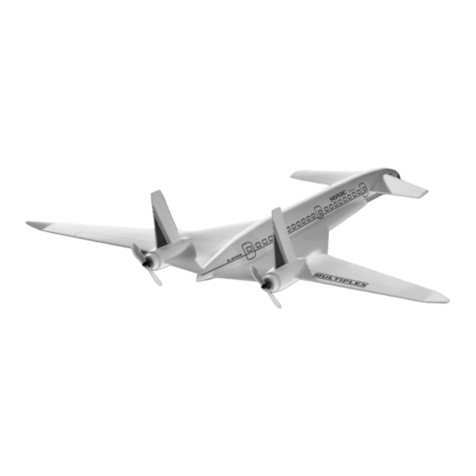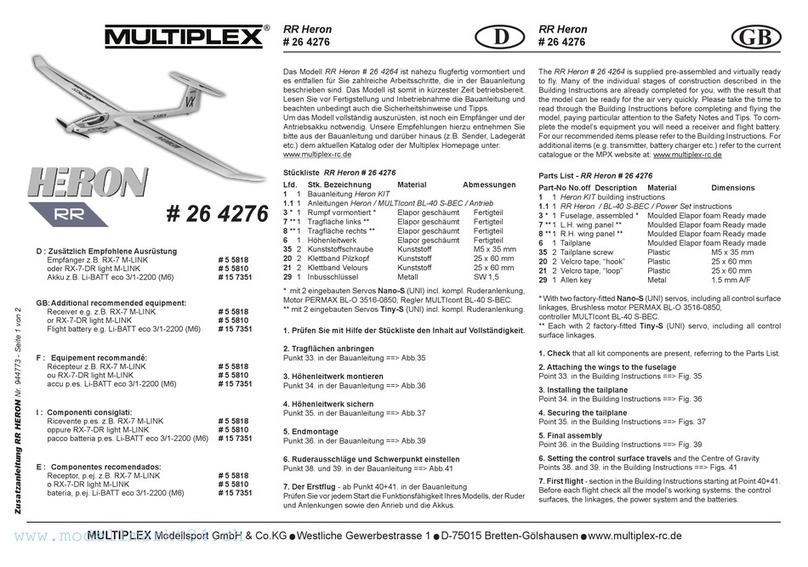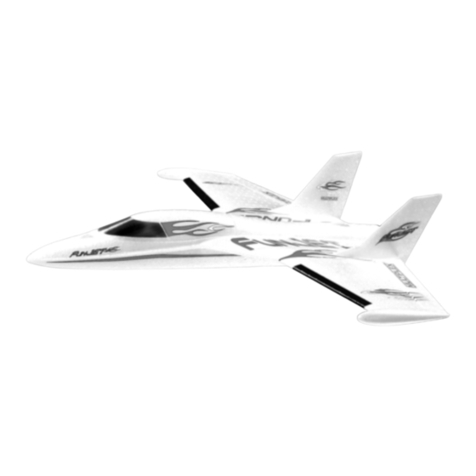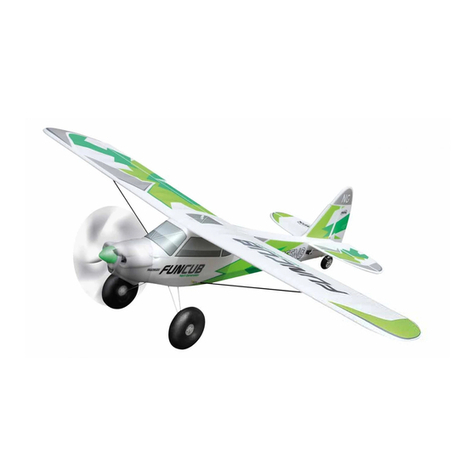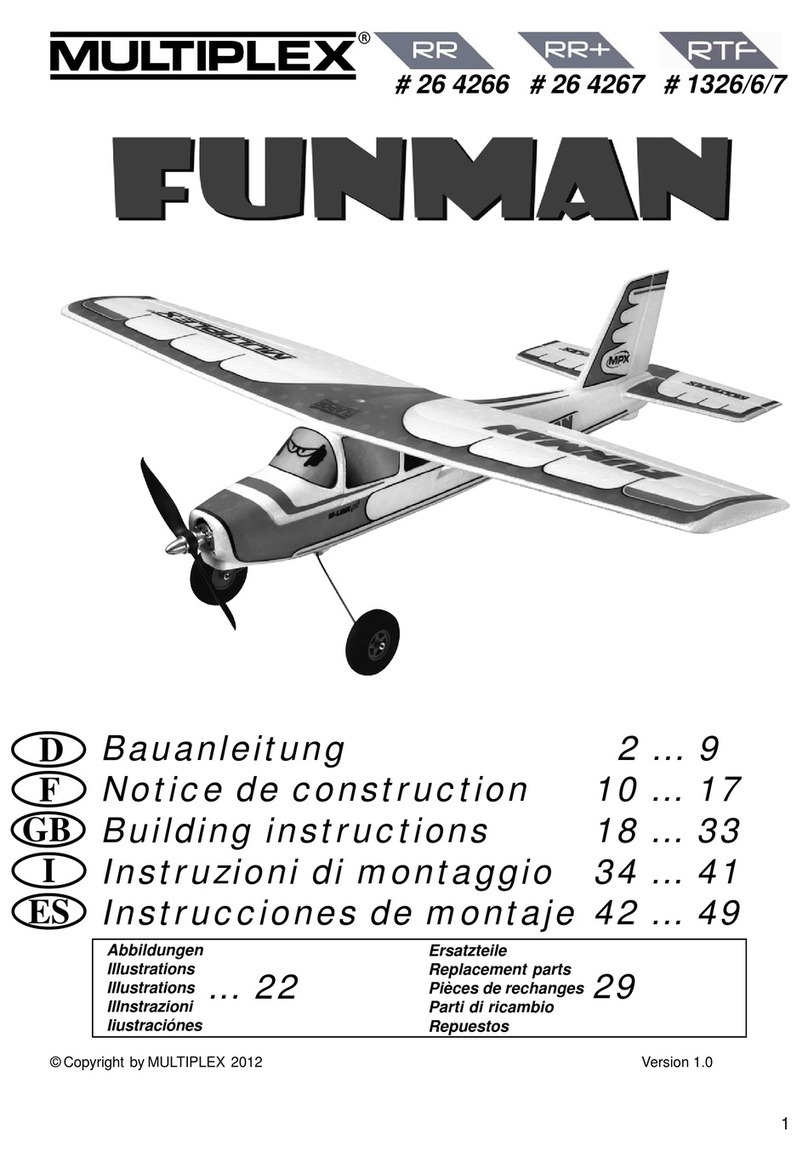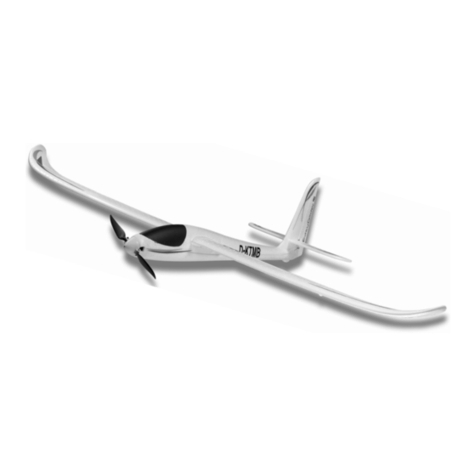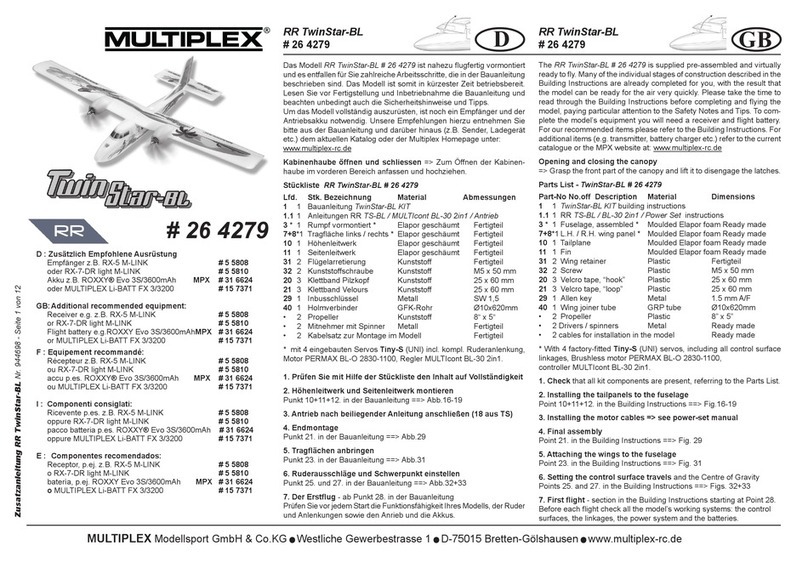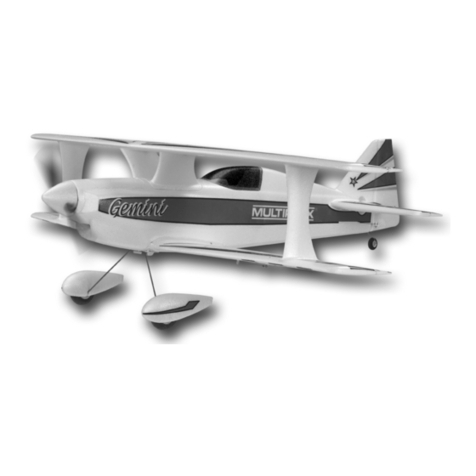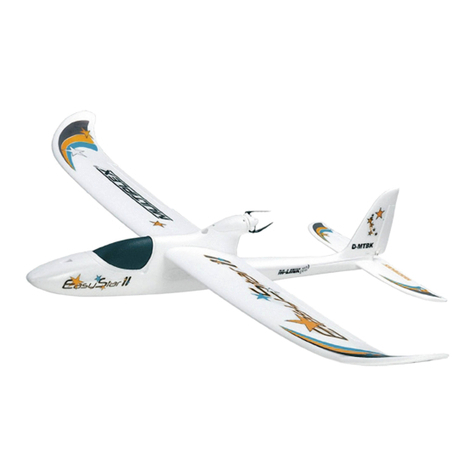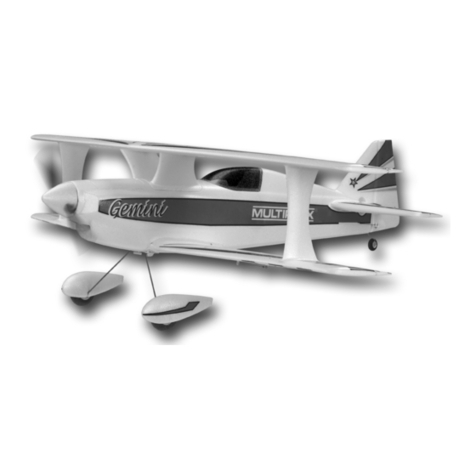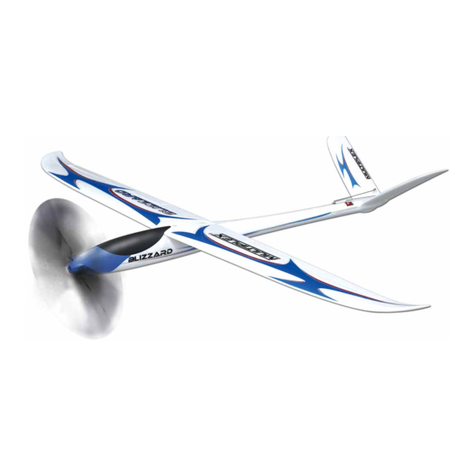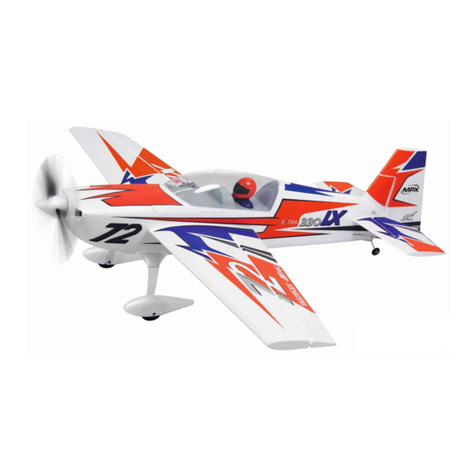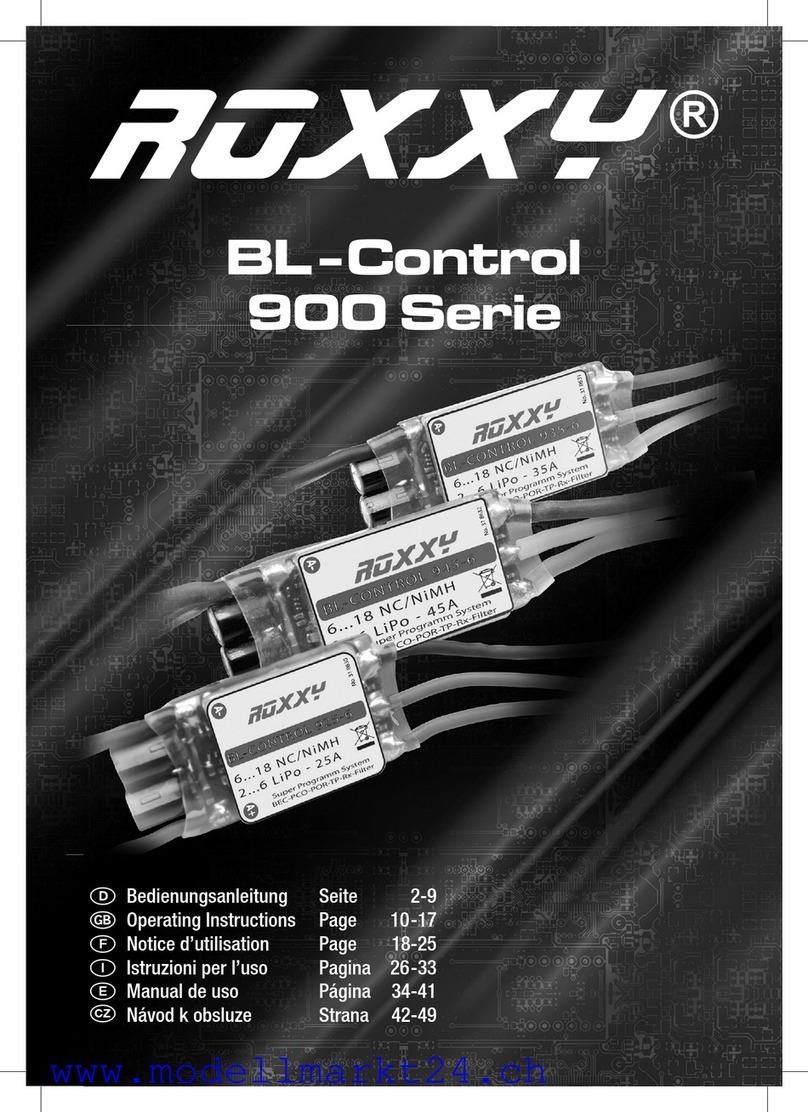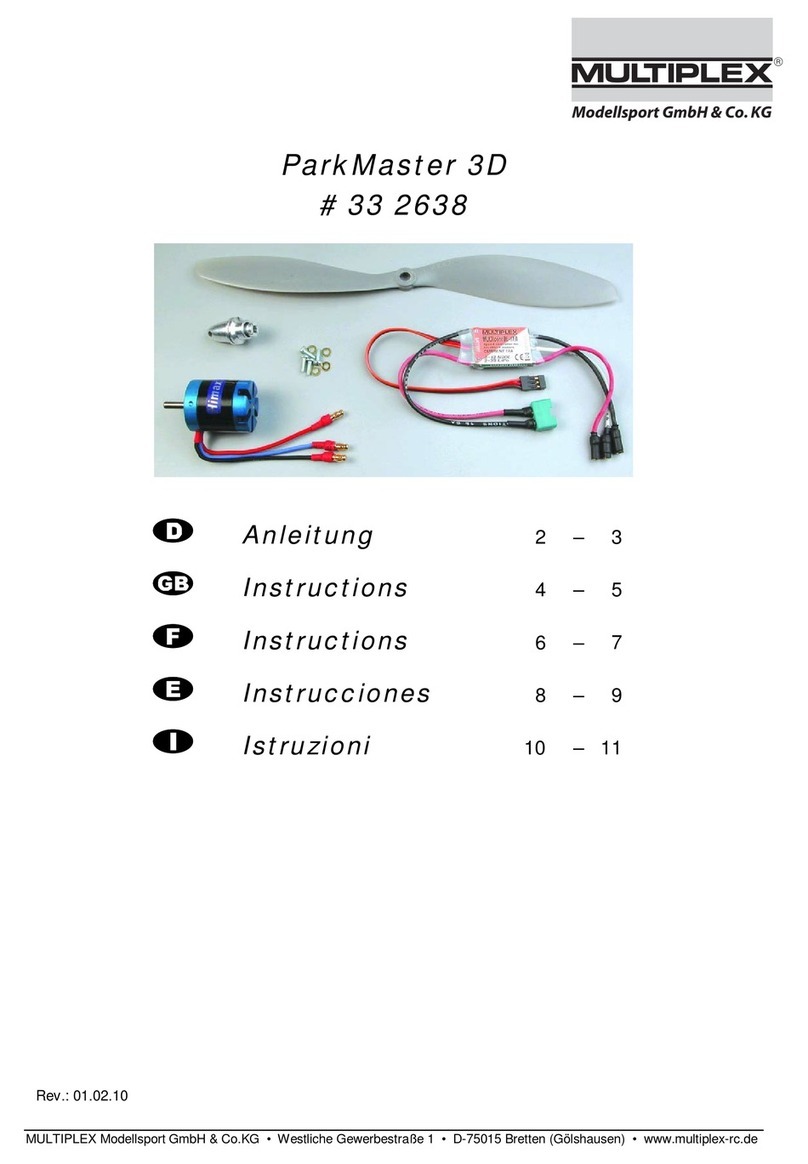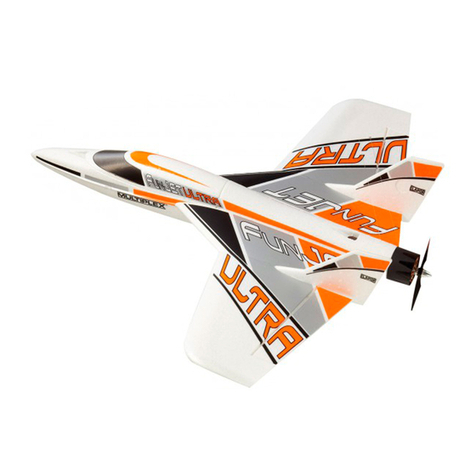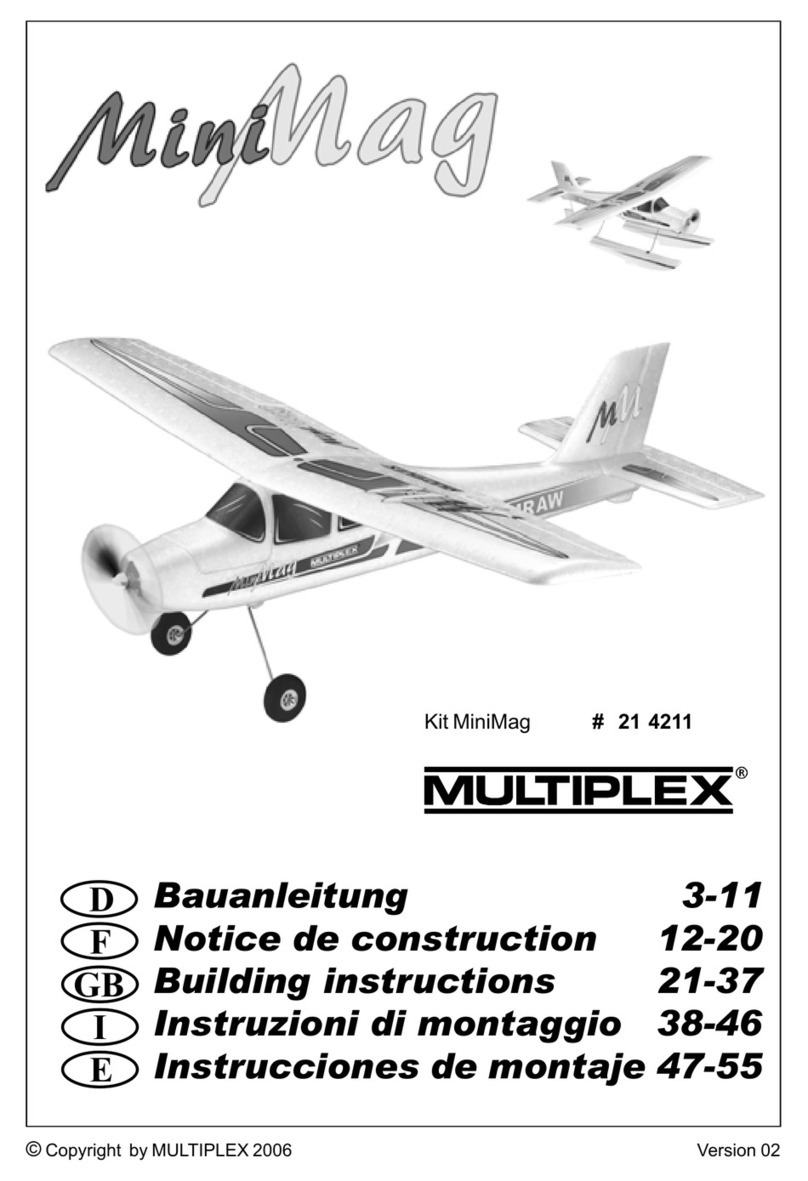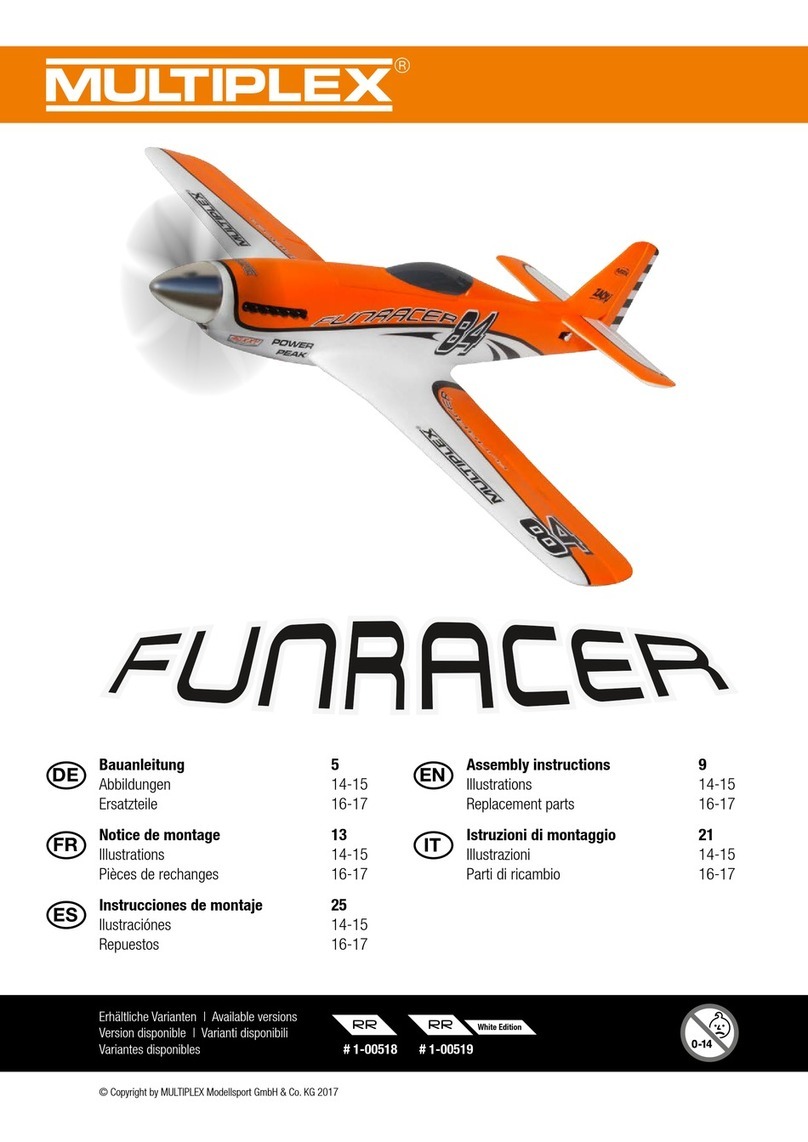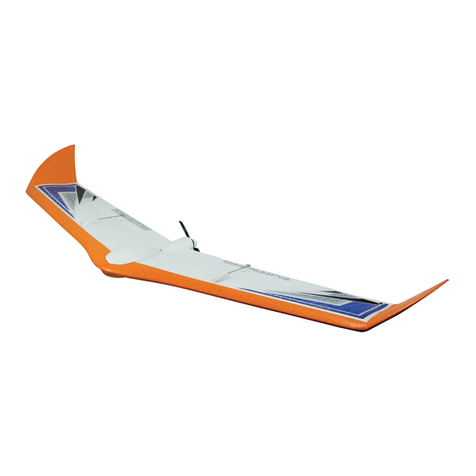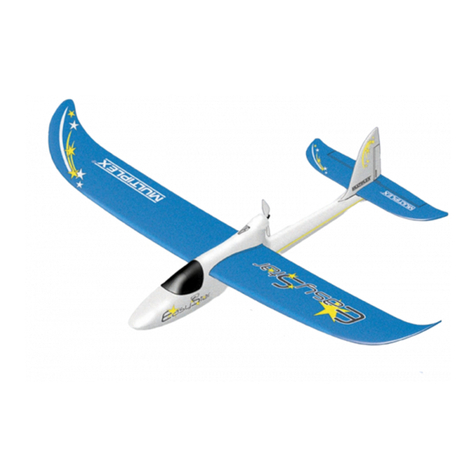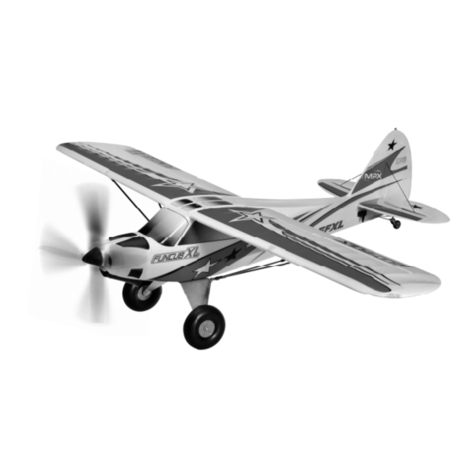9
korrektePositionierungdesAkkus und ggf. durch Einkleben
derentsprechendenAnzahlTrimmgewichte(Kugeln) 40 ins
Seitenleitwerkein.Durch Toleranzender Materialdichte so-
wieunterschiedlicheAusstattungsvariantenvonSeglerund
Elektroseglerkönnen hier keine exakten Vorgabengemacht
werden.Istdie richtige Position gefunden, stellen Siedurch
eine Markierung im Rumpf sicher, dass derAkku immer an
dergleichenStellepositioniertwird.AnschließenddieTrimm-
gewichtöffnungen mit demAufkleberSLW 2.3abdecken.
Abb. 41
39. Ruderausschläge einstellen (Richtwerte!)
Um eine ausgewogene Steuerfolgsamkeit des Modells zu
erzielen, ist die Größe der Ruderausschläge richtig einzu-
stellen.DieAusschläge werden jeweils an der tiefsten Stelle
derRuder gemessen.
Höhenruder
nachoben (Knüppel gezogen) ca. +10 mm
nachunten(Knüppelgedrückt) ca. - 10 mm
Elektroversion:GaszumischunginHöhe ca. - 1,5 mm
Seitenruder
nach links und rechts je ca. 25 mm
Querruder
nachoben ca. +15 mm
nachunten ca. - 8 mm
Spoiler
beideQuerruder nachoben ca. +15 mm
Spoilerzumischungin Höhe ca. - 2 mm
Beider Funktion "Spoiler" werden zur Verkürzungdes Lan-
deanflugesbeide Querruder nach obengestellt.Gleichzeitig
wird dazu ein entsprechender Tiefenruderausschlag zu-
gemischtumdas Modell im stabilen Flugzustandzu halten.
VorraussetzungdazuisteineFernsteuerungmitentsprechen-
denMischern.LesenSiehierzudieAnleitungIhrerFernsteue-
rung.
Hinweis: Bei Querruder "rechts" bewegt sich das in Flug-
richtunggesehenrechteQuerrudernachoben.FallsIhreFern-
steuerungdieoben angegebenen Wege nicht zulässt, müs-
sen Sie ggf. den Gestängeanschluss umsetzen.
Vergewissern Sie sich, dass alle Fernsteuerungs-
komponenten richtig eingebaut und angeschlossen sind.
PrüfenSieRudereinstellungen,Drehrichtungen der Servos
und Freigängigkeit der Rudermechaniken.Achten Sie dar-
auf, dass die Anschlusskabel nicht in den sich drehenden
Motorgelangenkönnen(mitHeißkleberbefestigen)!Prüfen
SieauchnochmalsdieMotordrehrichtung(vorsichtig!).
40. Vorbereitungen für den Erstflug
Fürden ErstflugwartenSie einen möglichst windstillenTag
ab.Besonders günstig sind oftdieAbendstunden.
Vordemersten FlugunbedingteinenReichweitentest durch-
führen! Halten Sie sich dabei an die Vorgaben des Herstel-
lersIhrerFernsteuerung!
Sender-und Flugakku sindfrischundvorschriftsmäßiggela-
den. Vor dem Einschalten des Senders sicherstellen, dass
derverwendete Kanal frei ist, sofern keine 2,4 GHz-Anlage
verwendetwird.
Falls etwas unklar ist, sollte auf keinen Fall ein Start erfol-
gen. Geben Sie die gesamte Anlage (mit Akku, Schalter-
kabel,Servos) in die ServiceabteilungdesGeräteherstellers
zurÜberprüfung.
41.Erstflug …
Das Modell wird aus der Hand gestartet (immer gegen den
Wind).
Beim Erstflug lassen Sie sich besser von einem geübten
Helferunterstützen. NachErreichenderSicherheitshöhe die
Ruder über die Trimmung am Sender so einstellen, dass
dasModellgeradeausfliegt.
MachenSiesich, beim Motorsegler, in ausreichender Höhe
vertraut,wiedasModellreagiert,wennderMotorausgeschal-
tetwird. SimulierenSieinjedemFall Landeanflügeinausrei-
chender Höhe, so sind Sie vorbereitet, wenn derAntriebs-
akkuleer wird.
Versuchen Sie in derAnfangsphase, insbesondere bei der
Landung,keine "Gewaltkurven" dicht über demBoden.Lan-
denSie sicher und nehmen besser ein paar Schritte in Kauf,
alsmitIhrem Modell bei der Landungeinen Bruch zu riskie-
ren.
42. Sicherheit
Sicherheit ist das oberste Gebot beim Fliegen mit Flug-
modellen.EineHaftpflichtversicherungist obligatorisch.Falls
Sieineinen Verein oder Verbandeintreten, können Sie die-
se Versicherung dort abschließen. Achten Sie auf ausrei-
chendenVersicherungsschutz(Modellflugzeug mitAntrieb).
HaltenSieModelleund Fernsteuerungimmerabsolut inOrd-
nung.Informieren Sie sich über die Ladetechnik für die von
IhnenverwendetenAkkus.Benutzen Sie alle sinnvollen Si-
cherheitseinrichtungen,dieangebotenwerden.Informieren
SiesichinunseremHauptkatalogoderaufunsererHomepage
www.multiplexrc.de
MULTIPLEX-ProduktesindvonerfahrenenModellfliegernaus
der Praxis für die Praxis gemacht. Fliegen Sie
verantwortungsbewusst!AnderenLeutendichtüber dieKöp-
fezu fliegen ist kein Zeichen für wirklichesKönnen,derwirk-
liche Könner hat dies nicht nötig. Weisen Sie auch andere
Pilotenin unser aller Interesse auf diese Tatsache hin. Flie-
gen Sie immer so, dass weder Sie noch andere in Gefahr
kommen. Denken Sie immer daran, dass auch die allerbe-
steFernsteuerungjederzeit durch äußere Einflüsse gestört
werdenkann.Auch langjährige, unfallfreieFlugpraxisistkei-
neGarantiefür die nächste Flugminute.
Prüfen Sie vor jedem Start den sicheren Sitz des Ak-
kus, der Flügel und Leitwerke. Kontrollieren Sie auch
die Funktion aller Ruder!
Wir, das MULTIPLEX -Team, wünschen Ihnen beim Bauen
undspäterbeimFliegenvielFreudeund Erfolg.
MULTIPLEXModellsportGmbH&Co.KG
